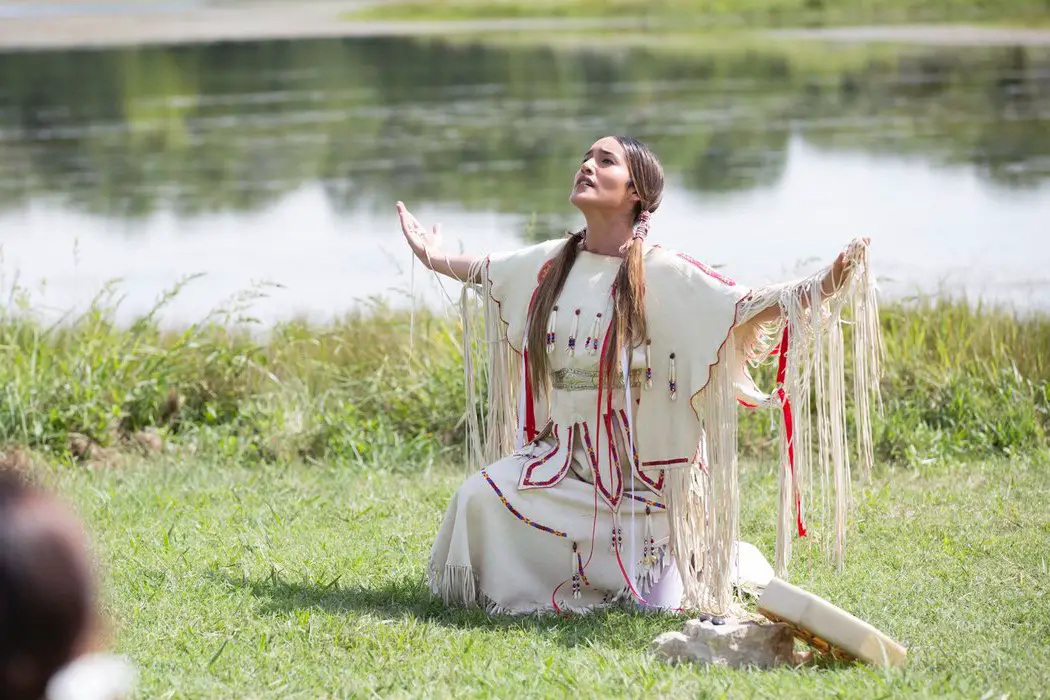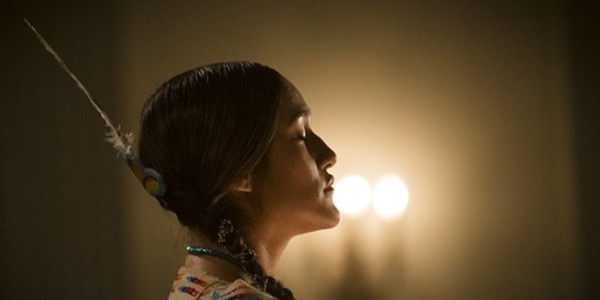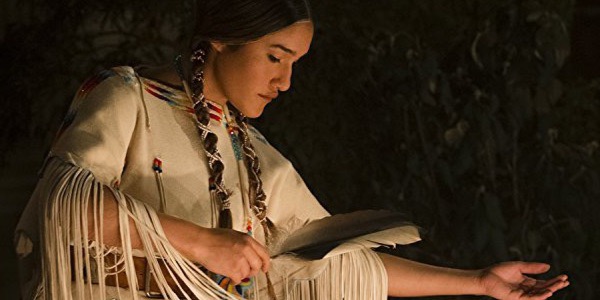TE ATA: Storytelling As Survival

Hazem Fahmy is a poet and critic from Cairo. He…
I’m not sure one can overemphasize the necessity of Native American representation in cinema. Historically, American cinema has overwhelmingly presented indigenous folks as either barbaric and violent, or as primal and mystical. One could easily argue that the Western, a foundational genre of the American canon, is built on the colonial image of the heroic white man triumphing over the ‘savage’ native. John Ford seemed particularly fond of this trope, having used it as the main narrative force of such canonical films as Stagecoach and The Searchers.
And when American cinema wasn’t murdering Native Americans, it was distorting their histories and exoticizing their cultures. Monumentally influential films such as Kevin Costner’s Dances with Wolves and Disney’s Pocahontas took their liberty with their recounting of their anecdotes, centering white people in the process. Latin American cinema seems to have done somewhat better in these regards, what with recent terrific films like Ciro Guerra’s Embrace of the Serpent and Jayro Bustamante’s Ixcanul even gaining international acclaim and attention.
But Nathan Frankowski’s Te Ata is in a unique category of its own. Unlike the stellar aforementioned Latin American films, Te Ata does not focus on the suffering and plight of indigenous folks, though it absolutely sheds light on the matter, but opts instead for a subversive Hollywood-esque inspirational tale. The biopic of legendary Chickasaw actor and storyteller, Mary “Te Ata” Fisher, the film follows her as she leaves her Oklahoma community in pursuit of a radical career in the arts, one that would take her across the nation, and later the world. In the absence of space in the theater world for Native voices, she carved her own, creating exhilarating and dynamic one-woman shows that retold traditional epics and folklore. The woman was nothing short of an absolute powerhouse, and her shoes are filled excellently.
A Personal Performance
Q’orianka Kilcher absolutely shines as our titular heroine. There is a tremendous personal element to her performance, one that comes from her real life experience as an indigenous Peruvian in a racialized film industry. One feels the weight of this character for Kilcher. There’s this profound sincerity to her every word and gesture, one that captures the nuance and struggle of being a Chickasaw woman at such a turbulent time, in such a harsh industry. Likewise, Gil Birmingham is exceptional as her loving, but somewhat restraining father, T.B. Thompson. He is particularly adept at portraying a man who misguidedly attempts to hold back his daughter, not out of malice, but of genuine and legitimate concern for her safety and future. It is a difficult and subtle role that Birmingham was beyond equipped to play.

Yet, Nathan Frankowski’s vision showed a disappointing imbalance of tone, both politically and emotionally. There’s a certain air of naïve optimism that dominates the vast majority of the film, one that seems inappropriate for a story that is actively attempting to comment on the plight and perseverance of Native Americans. There seem to be too arcs here: the first, and more prevalent, being her journey as a budding artist, and the second being an arc of identity as she comes to grips with the limitations and opportunities of being a young Chickasaw woman in 20th century America.
The problem here is that these two arcs feel separate, tonally at odds with one another. When Te Ata encounters racial violence, it feels like an alien disruption of the narrative, and not one that seems to have much influence on her life or perspective afterwards. Early in the film, she stumbles upon a heated argument between a belligerent white man and a Chickasaw man of her community while walking to a faraway neighbor’s house. On the walk back, she hears the crack of a gunshot and is horrified to find the Chickasaw man murdered. She runs back to her house, stammering and in tears. Such traumatic events take a toll on people, especially artists, but we never hear any mention of this gruesome act again. It just seems to fade into the back of her mind, and in turn ours.
Character Amnesia
Similarly, one of the most heartbreaking scenes of the film seems to also be forgotten quickly afterwards. As their relationship begins to grow, the awkwardly sweet Dr. Fisher (played excellently by Mackenzie Astin) takes Te Ata to the movies. As was common at the time, a cartoon plays before the feature presentation. To her shock and dismay, the cartoon is a grotesque depiction of Native Americans; one that relies on violent and painful stereotypes that demean their intelligence and cultures. Even worse, the crowd erupts in laughter. Te Ata and Fisher are a somber island in a sea of laughing white faces. Feeling humiliated, Te Ata storms out of the theater with Fisher right behind her.

Though the incident convinces her to agree to Fisher’s early suggestion that she perform her stories for children, that seems to be it. We do not get the sense that she or her path have been in any meaningful way altered by such a painful experience. Much of the power of that scene comes from preceding scenes in which Te Ata steadily begins to grow accustomed to life in New York, becoming more and more optimistic of her chances despite the racialization of the theater world. The cartoon scene is a deeply upsetting one because it shatters her hope that white society has the capacity to respect Native Americans and their cultures.
Another significant oversight is the minimal role the persecution of Native American traditions and practices seems to play in the film. With the exception of a confrontation between the Chickasaw Governor at the start of the film, and Thompson’s beating at the hands of the authorities later in the film, there is little to no mention of the existential violence of the so-called “Code of Indian Offences”, a monstrous law that from 1883 to 1933 effectively made Native American cultural and religious practices illegal. But we don’t see the effects this has on Te Ata, save for the sequence, later in the film, when she returns home to comfort her father. On the one hand, this omission of the law’s effect on her work, both logistically and existentially, seems outright unrealistic, but on the other it is also a wasted opportunity to further emphasize the power and necessity of her work. Te Ata was pushing for indigenous visibility at a time when powerful white men were literally trying to mark her culture illegal. I don’t know how more badass an artist can be.

Te Ata: Conclusion
And yet despite these flaws, Te Ata succeeds at replicating the power of its incredible subject. By honoring the story and legacy of Te Ata, the film asserts its own, justifiable, importance in a time of continued Native American erasure from art and history. If nothing else, Te Ata triumphs at breathing new life into a legend, and allowing us the pleasure of re-experiencing her vital legacy. Now, that’s more than enough reason to make it worth your while.
Which cultural icon would you like to see in a biopic next? Tell us your thoughts in the comments below!
Te Ata is now playing in select theaters in the U.S. For all international release dates, see here.
https://www.youtube.com/watch?v=YYKmrkiFJ6U
Does content like this matter to you?
Become a Member and support film journalism. Unlock access to all of Film Inquiry`s great articles. Join a community of like-minded readers who are passionate about cinema - get access to our private members Network, give back to independent filmmakers, and more.
Hazem Fahmy is a poet and critic from Cairo. He is an Honors graduate of Wesleyan University’s College of Letters where he studied literature, philosophy, history and film. His work has appeared, or is forthcoming in Apogee, HEArt, Mizna, and The Offing. In his spare time, Hazem writes about the Middle East and tries to come up with creative ways to mock Classicism. He makes videos occasionally.












